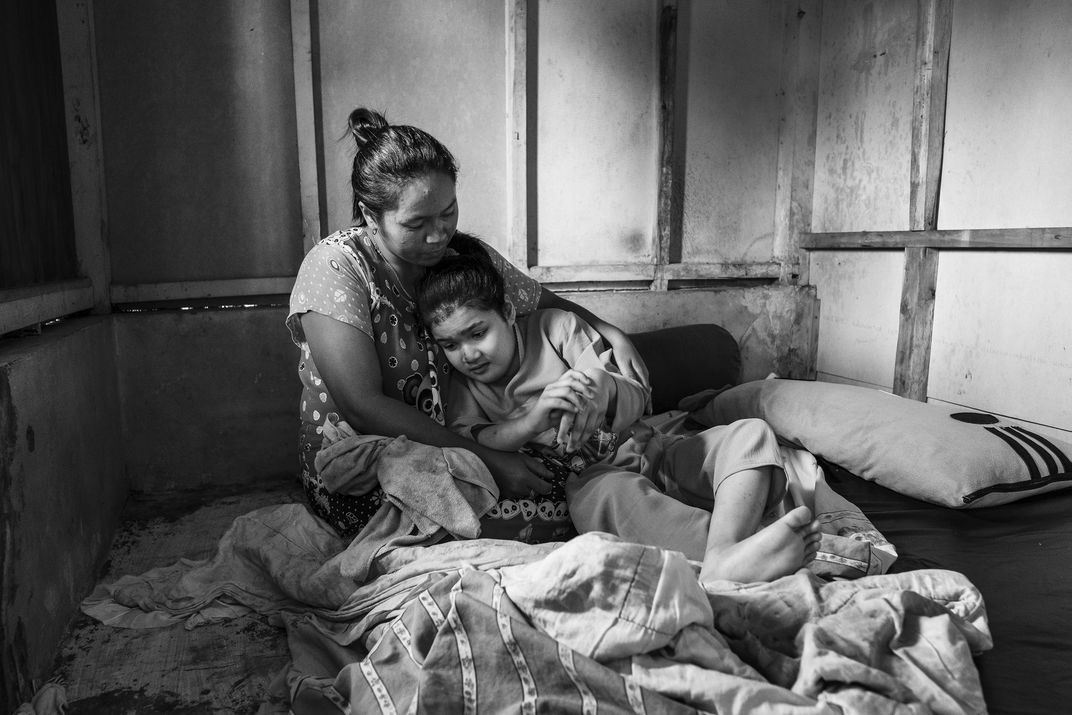Nur Aini, 33, embraces her daughter Camelia, 12. Camelia has not felt, does not see and has suffered from epilepsy since she was 4: her mother used, without her knowledge, contaminated water during her pregnancy. Minamata’s disease is caused by chronic mercury poisoning. This metal, used in hundreds of illegal gold mines in the forests of Java, Indonesia, is contaminating the environment. Miners, who have worked for years in contact with mercury, have developed neurological degenerative diseases. To be able to amalgamate the gold powder, during the phase of separation from the stone and from the earth residues, mercury is used: the process releases toxic substances in liquid and gaseous form, poisoning the miners themselves and polluting the environment. But the spillage of gold mining waste has contaminated also the aquifers upstream: the villages downstream from the mines have for years used water with mercury for domestic use and to irrigate crops. There are many cases of poisoning, many pregnant women have passed mercury to the fetus without their knowledge, causing irreversible damage to the unborn child with morphological and anatomical abnormalities. The disease is manifested by neurological problems, difficulty in movement, muscle weakness, visual, auditory and cognitive deficits, hydrocephaly. Paralysis or coma can also occur until death. UNIDO, the United Nations Organization for Industrial Development, has estimated that one third of all mercury released by man into the environment comes from artisanal gold mining.
| Date Taken: | 01.2023 |
| Date Uploaded: | 11.2023 |
| Photo Location: | Cisitu, Indonesia |
| Camera: | X-Pro2 |
| Copyright: | © Erberto Zani |

